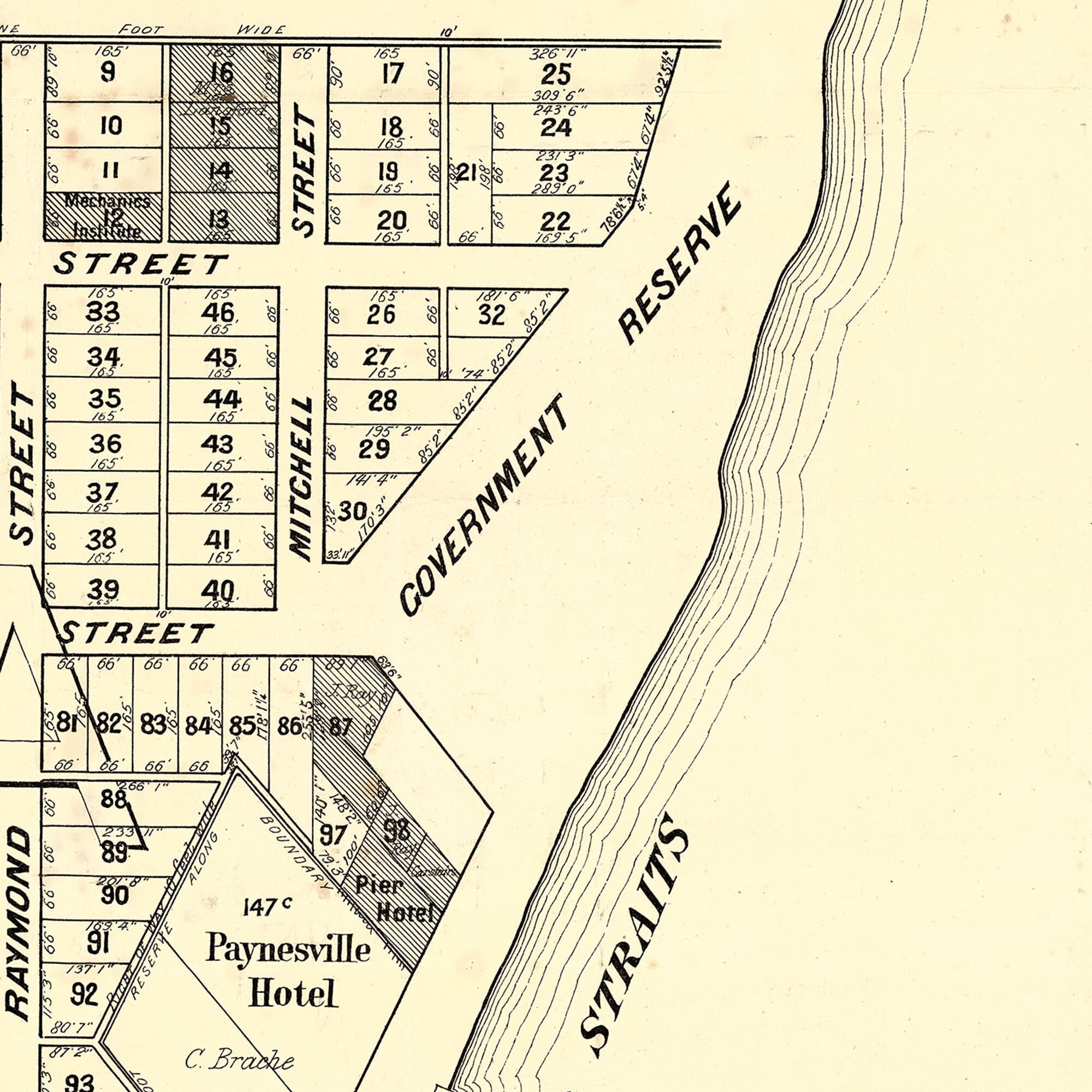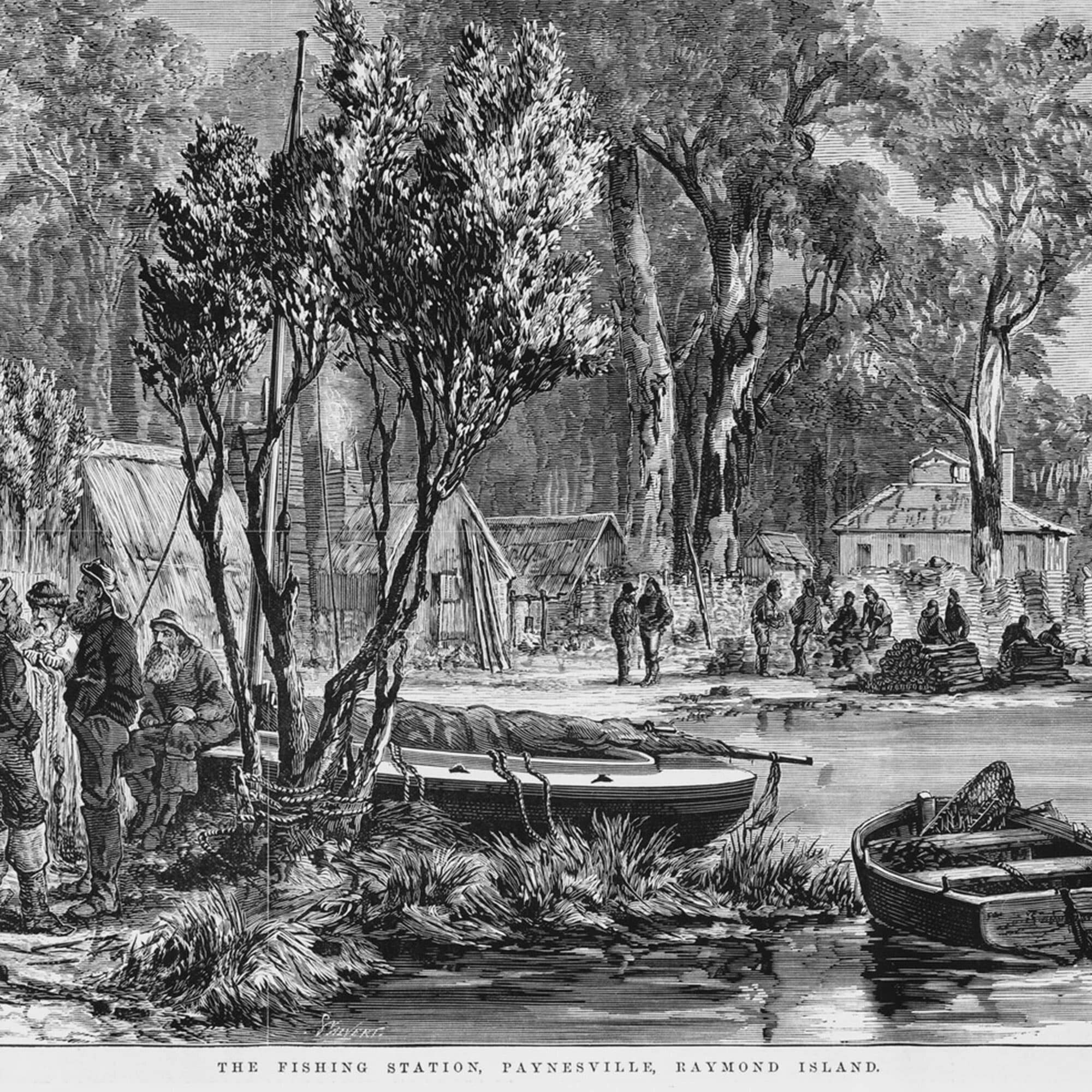 Image 1 of 8
Image 1 of 8

 Image 2 of 8
Image 2 of 8

 Image 3 of 8
Image 3 of 8

 Image 4 of 8
Image 4 of 8

 Image 5 of 8
Image 5 of 8

 Image 6 of 8
Image 6 of 8

 Image 7 of 8
Image 7 of 8

 Image 8 of 8
Image 8 of 8









Paynesville Historic Plan of Subdivision circa 1880
EXCLUSIVE TO HISTORIC PRINTS
In 1878, fishermen camps known as fishing stations, dotted in numerous sheltered locations around the Lakes’ shores and the current foreshore reserve. Conveniently the steamer Tanjil already passed through the McMillan Straits thrice weekly on its regular journey between Bairnsdale and Sale and was able to collect and deliver the baskets of fish establishing a profitable trade route.
Original known as Toonalook which was an aboriginal name for “place of many fish”, was renamed Paynesville in 1886 by the Dickson family, most likely a gesture of acknowledgement for the guidance they had received from the Colony’s Chief Fisheries Officer, Captain C. B. Payne. Captain Payne was able to establish sustainable fishing and prevent the over-fishing practices which nearly saw the end of the Colony.
The Paynesville post office opened on 8 November 1879, placing this artwork creation around this time.
If you would like to learn more about Paynesville’s history, the Paynesville Maritime Museum is a great reference: LINK
We’d also like to thank King & Heath First National for allowing this rare and exclusive auction poster to be digitised and reproduced for sale. The original is on display at the King & Heath Paynesville Office, 63 Esplanade, Paynesville VIC 3880
EXCLUSIVE TO HISTORIC PRINTS
In 1878, fishermen camps known as fishing stations, dotted in numerous sheltered locations around the Lakes’ shores and the current foreshore reserve. Conveniently the steamer Tanjil already passed through the McMillan Straits thrice weekly on its regular journey between Bairnsdale and Sale and was able to collect and deliver the baskets of fish establishing a profitable trade route.
Original known as Toonalook which was an aboriginal name for “place of many fish”, was renamed Paynesville in 1886 by the Dickson family, most likely a gesture of acknowledgement for the guidance they had received from the Colony’s Chief Fisheries Officer, Captain C. B. Payne. Captain Payne was able to establish sustainable fishing and prevent the over-fishing practices which nearly saw the end of the Colony.
The Paynesville post office opened on 8 November 1879, placing this artwork creation around this time.
If you would like to learn more about Paynesville’s history, the Paynesville Maritime Museum is a great reference: LINK
We’d also like to thank King & Heath First National for allowing this rare and exclusive auction poster to be digitised and reproduced for sale. The original is on display at the King & Heath Paynesville Office, 63 Esplanade, Paynesville VIC 3880
EXCLUSIVE TO HISTORIC PRINTS
In 1878, fishermen camps known as fishing stations, dotted in numerous sheltered locations around the Lakes’ shores and the current foreshore reserve. Conveniently the steamer Tanjil already passed through the McMillan Straits thrice weekly on its regular journey between Bairnsdale and Sale and was able to collect and deliver the baskets of fish establishing a profitable trade route.
Original known as Toonalook which was an aboriginal name for “place of many fish”, was renamed Paynesville in 1886 by the Dickson family, most likely a gesture of acknowledgement for the guidance they had received from the Colony’s Chief Fisheries Officer, Captain C. B. Payne. Captain Payne was able to establish sustainable fishing and prevent the over-fishing practices which nearly saw the end of the Colony.
The Paynesville post office opened on 8 November 1879, placing this artwork creation around this time.
If you would like to learn more about Paynesville’s history, the Paynesville Maritime Museum is a great reference: LINK
We’d also like to thank King & Heath First National for allowing this rare and exclusive auction poster to be digitised and reproduced for sale. The original is on display at the King & Heath Paynesville Office, 63 Esplanade, Paynesville VIC 3880
